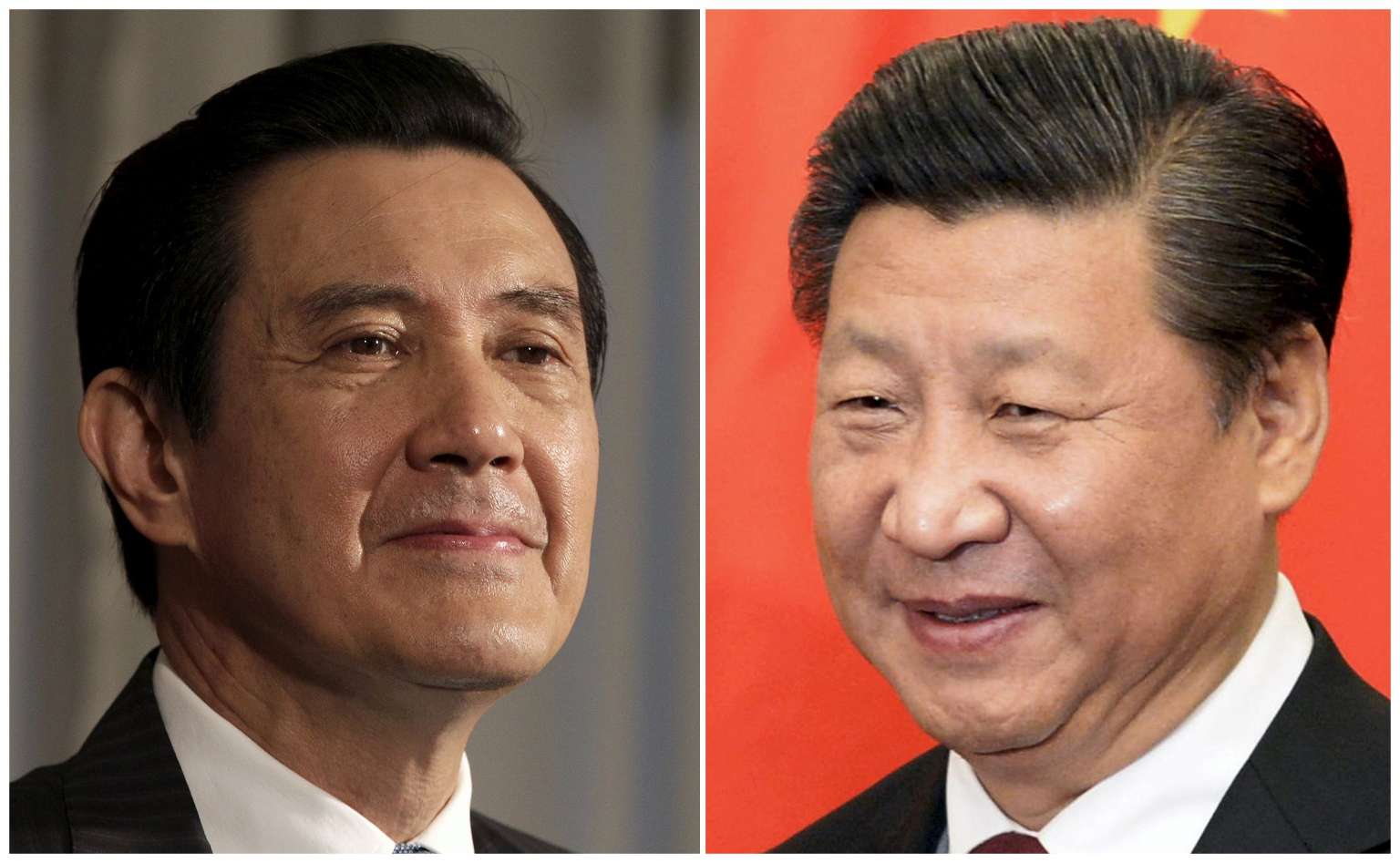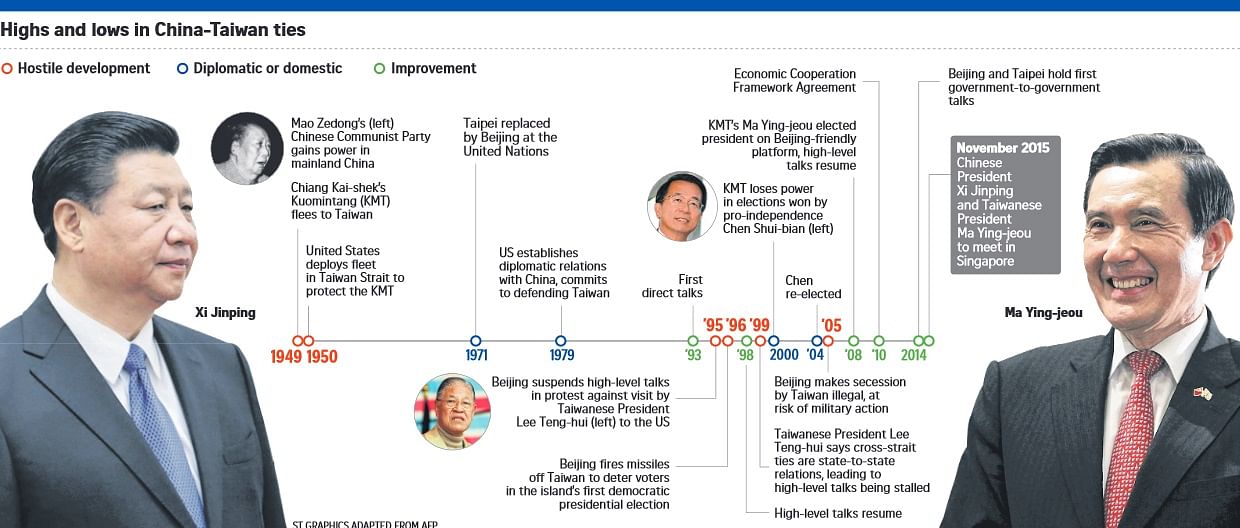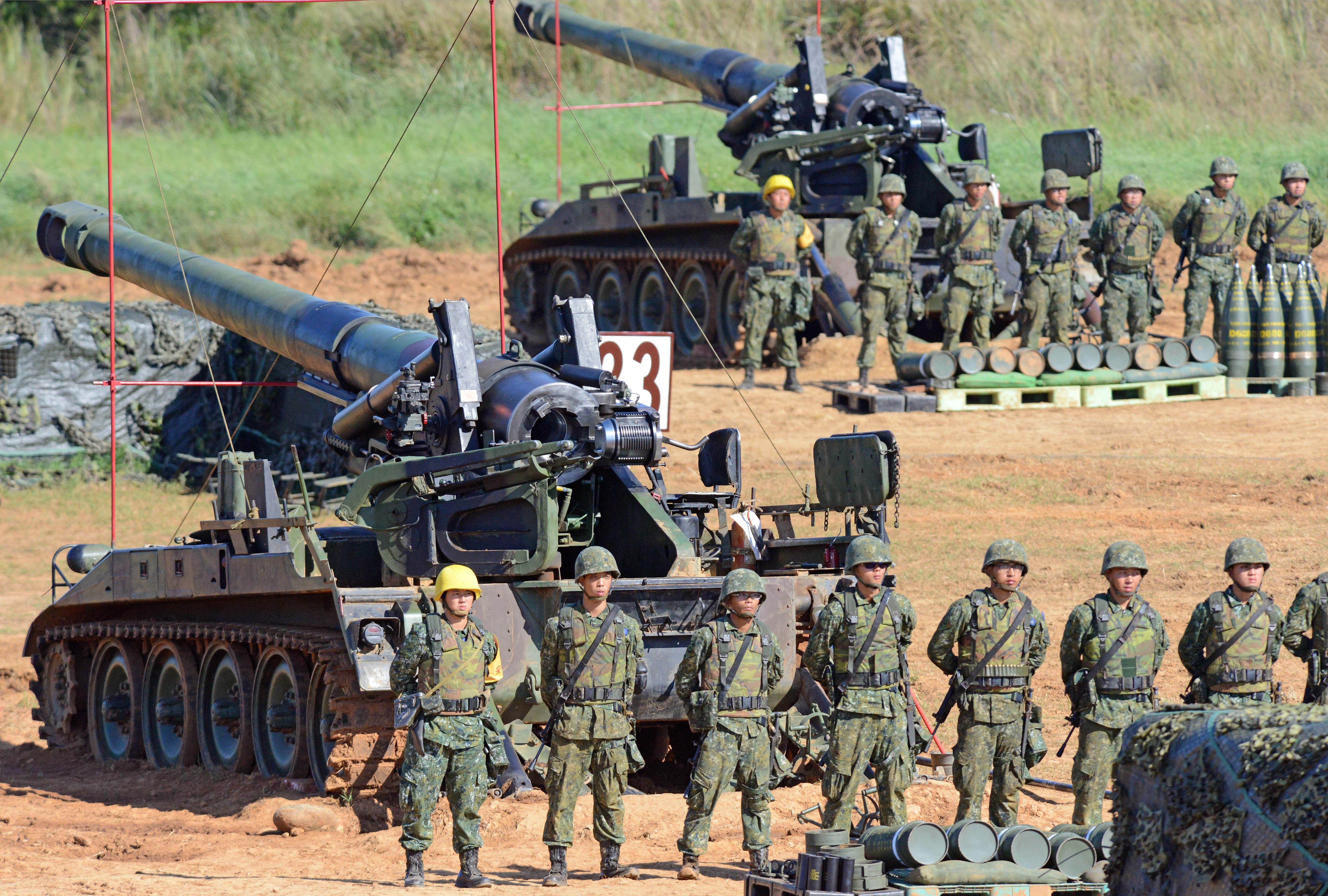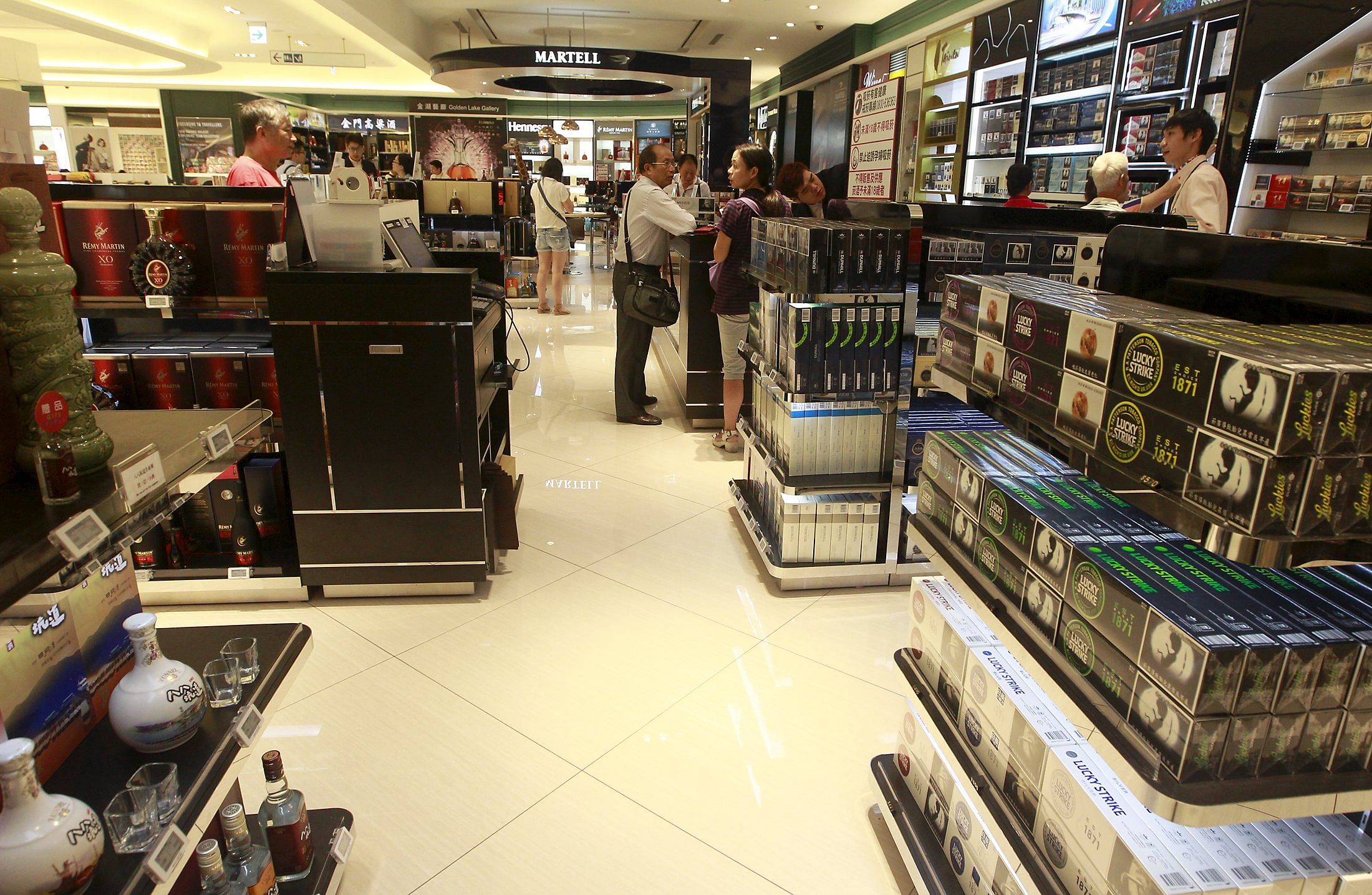China and Taiwan to hold historic talks in Singapore: 6 things about cross-strait relations
Sign up now: Get insights on Asia's fast-moving developments

Taiwanese President Ma Ying-jeou (left) and Chinese President Xi Jinping will meet in Singapore on Nov 7.
PHOTO: REUTERS
Lee Min Kok
Follow topic:
China President Xi Jinping is set to hold talks with Taiwan President Ma Ying-jeou in Singapore on Saturday (Nov 7), marking a historic first meeting between top leaders from the two sides of the Taiwan Strait since 1949.
Mr Xi is due in Singapore for a short but packed state visit starting Friday afternoon. On the sideline, he will hold talks with Mr Ma in a meeting that will "mark a start of direct exchange and communication between leaders of the mainland and Taiwan", according to Chinese state news agency Xinhua.
Ties between China and Taiwan over the past decades have been characterised by tensions over long-standing political differences. Here are some things to know about a relationship that has shown signs of warming up in recent years.
1. It all started with the Chinese Civil War

When the Republic of China (ROC), a nationalist government run by the Kuomintang (KMT) party, lost the war in 1949 to the Communist Party of China, KMT, led by leader Chiang Kai-shek, fled from mainland China to Taiwan and proclaimed Taipei to be its capital.
The communists subsequently declared the founding of the People's Republic of China (PRC) in the mainland, with Beijing as its capital. Since then, China has considered democratic Taiwan to be a renegade province that is part of its territory awaiting reunification.
2. Two major crises in the 1950s

There were two armed conflicts between China and Taiwan during that period: the Formosa Crisis in 1955 and the 1958 Taiwan Straits Crisis. China was the instigator on both occasions, and had wanted to drive Taiwanese troops off several islands in the Taiwan Strait that separated Taiwan from mainland China.
In response, the United States deployed a naval fleet in the Taiwan Strait to protect Taiwan.
But having recognised the ROC as the legitimate government of all of China since 1949, Washington reversed its decision in 1979 and established diplomatic ties with the PRC government.
The US does not support Taiwan independence. Maintaining strong, unofficial relations with Taiwan is a major US goal, in line with the US desire to further peace and stability in Asia.
Washington insists on the peaceful resolution of cross-strait differences, opposes unilateral changes to the status quo by either side, and encourages dialogue to help advance such an outcome.
3. The complicated One-China policy

In 1992, both the China and Taiwan governments agreed to recognise that there is only one China - both the mainland and Taiwan belong to the same state. However, they were unable to come to a consensus as to which was the legitimate government of this state.
The "agreement" came a year after then-Taiwan President Lee Teng-hui declared an end to 43 years of emergency rule on April 30, 1991, to pave the way for greater democracy on the island and closer relations with China.
Countries seeking to initiate diplomatic relations with China or Taiwan must recognise either one as the legitimate government of all of China. With many governments choosing China over Taiwan, the number of Taiwan's diplomatic allies, which are mostly smaller, impoverished nations like Burkina Faso and the Solomon Islands, has dwindled to 22 at the last count in 2014.
Singapore adheres to the 'One China' policy and has formal diplomatic ties with China. At the same time, Singapore maintains close ties with Taiwan such as forging free-trade deals with the island.
4. Maiden high-level China-Taiwan talks held in Singapore

The heads of two semi-government bodies, China's Association for Relations Across the Taiwan Straits (Arats) chairman Wang Daohan and Taiwan's Straits Exchange Foundation (SEF) chief Koo Chen-fu, met in the Republic for landmark talks from April 27-29, 1993.
Four pacts were signed, including an agreement to foster greater economic, cultural and media exchanges, by Mr Wang and Mr Koo, along with the promise to schedule regular meetings between representatives from both bodies.
But relations were undermined and high-level talks suspended two years later in June 1995 when President Lee Teng-hui visited the US to speak at his alma mater, Cornell University.
The Chinese government responded with the conducting of missile tests near Taiwan, and the US reacted by dispatching two aircraft carrier battle groups to the region.
China repeated its live firing exercises in the lead-up to Taiwan's first democratic presidential election in 1996 (Mr Lee won in a landslide victory) as it wanted to warn the Taiwanese that proceeding with the election meant war. The US again countered with its naval assets.
High level talks resumed in 1998 and Mr Koo even met President Jiang Zemin but stalled again in 1999 after Mr Lee's two-states theory.
5. Economic ties thrive despite political differences

Trade links via sea and air were gradually established in the early 2000s. China and Taiwan (as Chinese Taipei) joined the World Trade Organisation within a month of each other in 2001.
China became Taiwan's largest trading partner in 2007 - 30 per cent of Taiwan's exports are sold to China - and bilateral trade reached US$102 billion (S$142.8 billion) that year, up from US$8 billion in 1991.
From 2000 to 2008, Mr Chen Shui-bian of the pro-independence Democratic Progressive Party (DPP) was in office. High-level talks were resumed in 2008 after a 13-year hiatus when the Kuomintang's Mr Ma, who is known to be friendly with Beijing, was elected president.
In 2010, Taipei and Beijing signed the Economic Framework Agreement (ECFA), viewed by experts as the most significant agreement between the two rivals since their division, despite concerns that it would make the island too dependent on China. The ECFA, seen as efforts by Mr Ma to reduce tensions, cut tariffs on both Chinese and Taiwanese exports to either side and aimed to boost economic growth in Taiwan.
In another sign of thawing relations, the top cross-strait officials - Taiwan's Mainland Affairs Council chairman Wang Yu-chi and China's Taiwan Affairs Office head Zhang Zhijun - met in 2014 and agreed to set up representative offices.
It was followed by another meeting between KMT chairman Eric Chu and Mr Xi in Beijing in May this year.
6. Mixed reactions to another historic meeting in Singapore

DPP leader Tsai Ing-wen, considered a frontrunner in Taiwan's presidential elections in January 2016, criticised the upcoming meeting as an election ploy and claimed it damaged the island's democracy. The Beijing-friendly KMT has been widely tipped to lose to the DPP.
Over the past two years, there has also been growing anti-China sentiment, particularly among Taiwan's youth, because of Beijing's growing economic influence.
The US also adopted a cautious approach to news of the meeting and said it would wait to see what comes out of it.
Mr Ma, in his first remarks on Thursday (Nov 5) on the upcoming meeting, said his meeting with Mr Xi was for "the future of cross-strait ties" and had nothing to do with the elections.
Sources: AFP, Reuters, Council on Foreign Relations, US Department of State, The Economist, The New York Times, BBC, South China Morning Post, The Straits Times Archives

